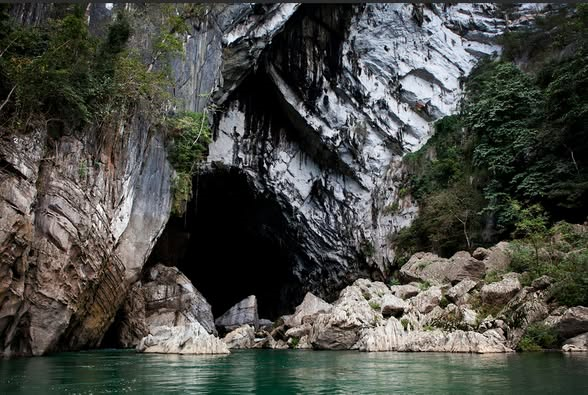KPL
Nestled in Boualapha District, Khammouane Province, Hin Nam No National Park spans an impressive 94,121 hectares and forms part of one of the most geologically significant limestone landscapes in Southeast Asia. Bordering Vietnam’s Phong Nha-Ke Bang National Park, the combined area of these protected zones covers over 217,000 hectares, forming a massive karst system dating back approximately 400 million years to the Paleozoic era.

(KPL) Nestled in Boualapha District, Khammouane Province, Hin Nam No National Park spans an impressive 94,121 hectares and forms part of one of the most geologically significant limestone landscapes in Southeast Asia. Bordering Vietnam’s Phong Nha-Ke Bang National Park, the combined area of these protected zones covers over 217,000 hectares, forming a massive karst system dating back approximately 400 million years to the Paleozoic era.
The name Hin Nam No, meaning “rock with sharp pointed peaks,” captures the park's dramatic topography—jagged limestone spires and enclosed karst valleys that create a uniquely rugged and ancient terrain. This otherworldly landscape distinguishes it from other limestone formations in the region.
One of Hin Nam No’s most remarkable features is the Nam Lot Cave (also known as Se Bang Fai). Often described as a hidden natural wonder, the cave is one of the largest subterranean river systems in the world. Its vast chambers and powerful underground river flows shift dramatically with the seasons, enhancing its mystique and global geological significance.
Hin Nam No is not only a geological marvel—it is also a critical biodiversity hotspot. Its varied karst ecosystems provide sanctuary for an array of rare and endangered species, many of which are endemic to the region. Among them are:
The Lao rock rat (Kha-nyou)—a “living fossil” once thought extinct
The white-cheeked gibbon and red-shanked douc langur
At least 10 primate species
Over 10 endangered reptile species
A rich diversity of birds and mammals, including the elusive bald-headed bird.
This delicate ecosystem thrives in the high limestone ridges and deep forested valleys, offering researchers and conservationists an invaluable natural laboratory.
Beyond its ecological value, Hin Nam No holds deep spiritual and cultural importance for local communities. Caves like Nam Lot have long been used as places of worship, with local people maintaining traditions and spiritual practices that have been passed down for generations.
The park is home to ethnic communities such as the Kri and Tri peoples, who have lived in harmony with nature for centuries. Their intimate connection to the land has earned Hin Nam No the affectionate title: “home for thousands of years.” These communities play a vital role in protecting and preserving the park’s rich natural heritage.
To safeguard Hin Nam No for future generations, management committees have been established at central, provincial, district, and village levels. These cooperative efforts aim to preserve the park's pristine condition, promote sustainable development, and recognize the vital role of indigenous knowledge and stewardship.
With its majestic landscapes, biological richness, and cultural depth, Hin Nam No National Park is more than just a protected area—it is a symbol of Laos’ commitment to environmental conservation and cultural heritage preservation. As global recognition grows, Hin Nam No stands as a shining example of how nature and humanity can thrive together in balance and respect.
KPL